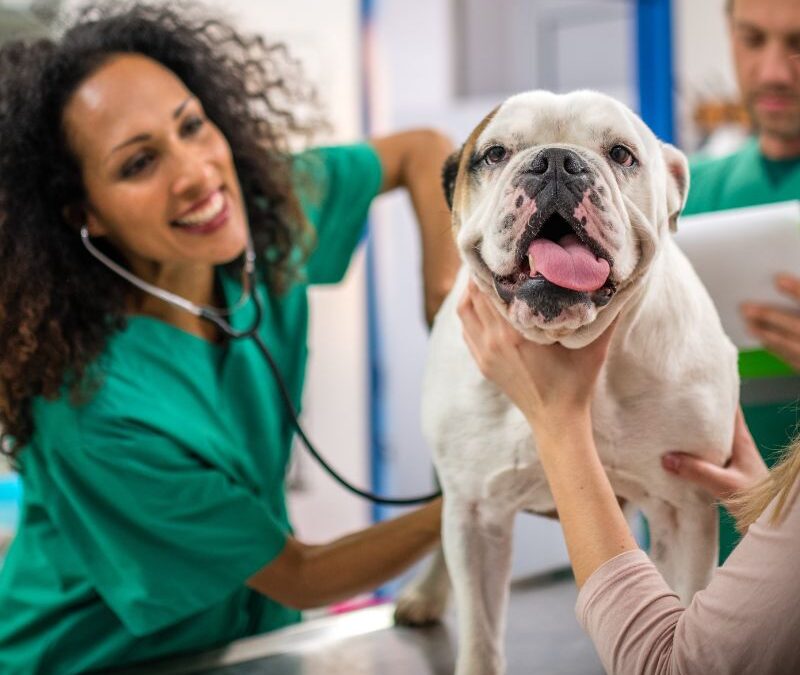
Orland Park, IL
Opening Soon Veterinary Hospitalin Orland Park, IL Hometown Veterinary is opening soon in Orland Park, IL and we’ll specialize in primary and urgent care. We are conveniently located in Orland Park next to Jewel-Osco. Book your appointment online now. Book Now...
Knollwood Hospital for Pets is Acquired and Rebrands to Hometown Veterinary Partners Schaumburg
Schaumburg, IL, September 11, 2024 | Knollwood Hospital for Pets will be rebranded as Hometown Veterinary Partners Schaumburg, bringing continuity of care to the Schaumburg community. For over four decades, Knollwood Hospital for Pets has been a pillar of veterinary...
5 Steps To A Pain-Free Pet
As pet parents, we want nothing more than to see our furry friends happy, healthy, and full of life. However, just like humans, pets can experience pain, and often, they suffer in silence. Because they can’t tell us when something hurts, it’s our responsibility to recognize the signs and take action to ensure their comfort and well-being. September is Animal Pain Awareness Month, a time to raise awareness about the importance of understanding and managing pain in pets. This guide will walk you through five essential steps to help your pet live a pain-free life, highlighting why early detection and proactive care are crucial. By learning how to spot the signs of discomfort and knowing what steps to take, you can make a significant difference in your pet’s quality of life.
1. Keep an Eye on Behavior
Behavioral changes are often the most noticeable signs that your pet may be experiencing pain or discomfort. These changes can be subtle, like decreased activity or appetite, or more pronounced, such as limping, whining, or unusual aggression. By paying close attention to your pet’s daily habits, you’ll be better equipped to identify any shifts that could indicate an underlying issue. Early detection can make a significant difference in managing pain effectively.
2. Use Caution When Your Pet is in Pain
Even the most loving and gentle pets can become defensive or aggressive when they’re in pain. It’s essential to approach them with care to avoid causing them further discomfort or distress. Gently observe their reactions to being touched in different areas of their body, and if they show signs of discomfort, such as pulling away, growling, or snapping, it’s a clear indication that something might be wrong. Remember, this behavior is not a reflection of their personality but a response to pain.
3. Pill Popping Isn’t the Only Solution
While medication is a common and often necessary component of pain management, there are several alternative treatments that can complement or, in some cases, replace traditional painkillers. Acupuncture, laser therapy, physical therapy, and weight management are just a few options that can help alleviate your pet’s pain without relying solely on medication. These therapies can be particularly beneficial for chronic conditions like arthritis, where long-term medication use might not be ideal. Always discuss these options with your veterinarian to find the best approach for your pet.
4. Your Vet Can Always Check for Pain
Regular veterinary visits are crucial in maintaining your pet’s overall health, and during these visits, your vet will routinely check for signs of pain or discomfort. Vets are trained to detect even the most subtle indicators of pain, which might go unnoticed at home. Whether it’s through physical examination, blood tests, or imaging, your vet can identify potential issues early on, allowing for prompt and effective treatment.
5. There Are Some Easy Ways to Minimize Pain
As a responsible pet parent, you can take several steps to minimize your pet’s risk of pain and discomfort. Regular dental care, a balanced diet, and proper exercise are foundational aspects of your pet’s well-being. Dental issues, in particular, are a common source of pain that can be easily prevented with regular brushing and veterinary cleanings. Similarly, maintaining a healthy weight through proper nutrition and exercise can prevent a host of conditions, including joint pain and diabetes, that can lead to chronic pain. By proactively managing these aspects of your pet’s care, you can help them live a longer, pain-free life.
Why Animal Pain Awareness Month is Important
1. It Reminds Us to Look Out for Subtle Changes in Our Pets’ Behavior
Pets can’t tell us when they’re hurting, so it’s up to us to be vigilant and aware of any changes in their behavior. This awareness is the first step in recognizing and addressing pain early, which can make all the difference in your pet’s quality of life.
2. Proper Pain Management Now Helps Reduce Risks Later
Addressing pain promptly can prevent more serious health issues down the road. Chronic pain, if left unmanaged, can lead to other complications, such as reduced mobility, depression, and even systemic illnesses. Early and effective pain management not only improves your pet’s current comfort but also protects their long-term health.
3. It Highlights the Need for Having a Great Veterinarian
Establishing a strong relationship with a trusted veterinarian is crucial. Regular check-ups ensure that any signs of pain are caught early, and having a go-to vet means that when something does arise, you’re not scrambling to find someone who can help. A great vet will work with you to develop a comprehensive pain management plan tailored to your pet’s needs, ensuring they get the best possible care.
If you believe your pet is experiencing pain, schedule an appointment with a veterinarian at a Hometown Veterinary Partners hospital near you.

